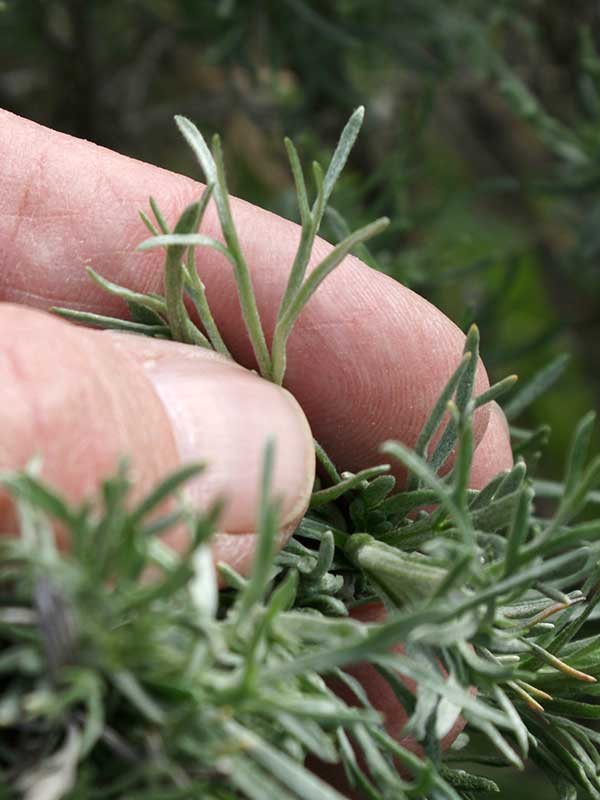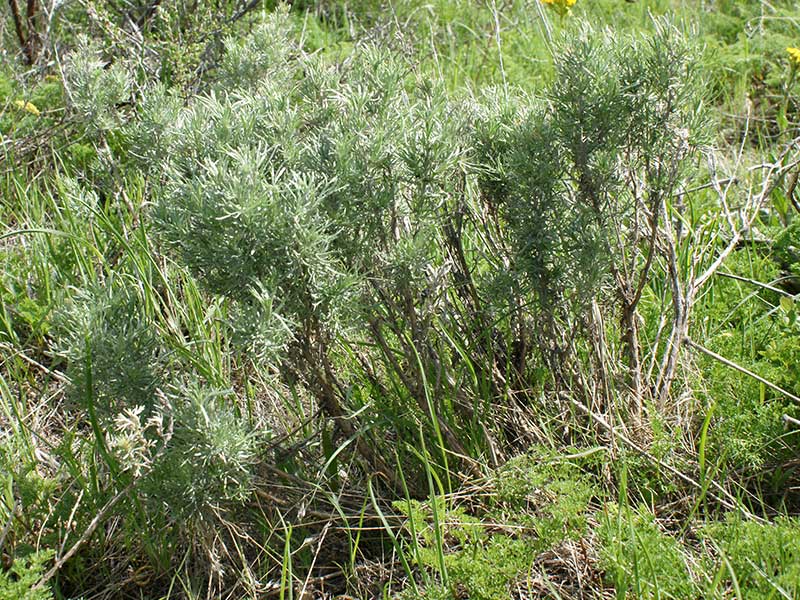Artemisia rigida / stiff sagebrush
- low growing deciduous shrub
- short, 3-5 lobed, grey leaves (hairy)
- mild to pungently aromatic leaves
- brittle branches up to 16 inches long
Also known as: scabland sagebrush
Stiff or scabland sagebrush is a native, deciduous shrub. That last adjective is important because it indicates that in the winter, it will be hard to find. It grows from a woody caudex (stem base). It reproduces almost entirely from seed but after fire, can regenerate from the caudex.
In addition to being deciduous, it is low growing and spreading. The trunk is very irregular, spreading in a dense cluster of brittle, short, stiff (rigid) branches. Older twigs are covered in dark, stringy or hairy bark. It is generally less than 18 inches tall.
Stiff sagebrush leaves are less than about 1.5 inches long, thin and have 3 (like a trident), or sometimes 5, lobes. Like big sagebrush, and most other Artemesia spp., they are coated with silvery hairs. The leaves are “mildly” to “pungently”scented.
The inflorescence is a narrow spike up to a foot long. The flower heads are somewhat bell-shaped but you’ll need a hand lens or very good eyes to see that… both because they are small and because the leaves around them are larger than the flowers. The florets are yellow-red to red which makes them different from other sagebrush species. Stiff sagebrush is a late bloomer, mostly September and October.
Stiff sagebrush grows in harsh soils – “scablands” – where little else can grow. Generally, the soils are shallow over bedrock. The roots are in the thin soil, sometimes anchored in rock cracks. Because of the density of the soil, frost heaving is common, pushing the caudex out of the soil.
| Blossom size | |
|---|---|
| Color | |
| Family | |
| Inflorescence size | |
| Inflorescence type | |
| When? | |
| Where? |



